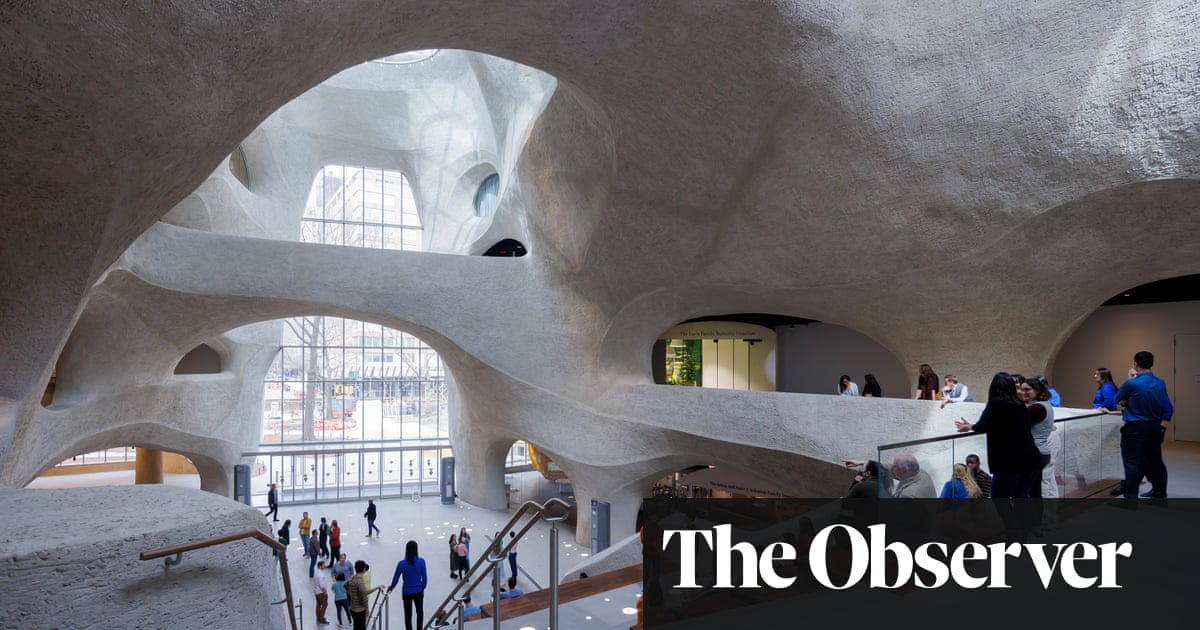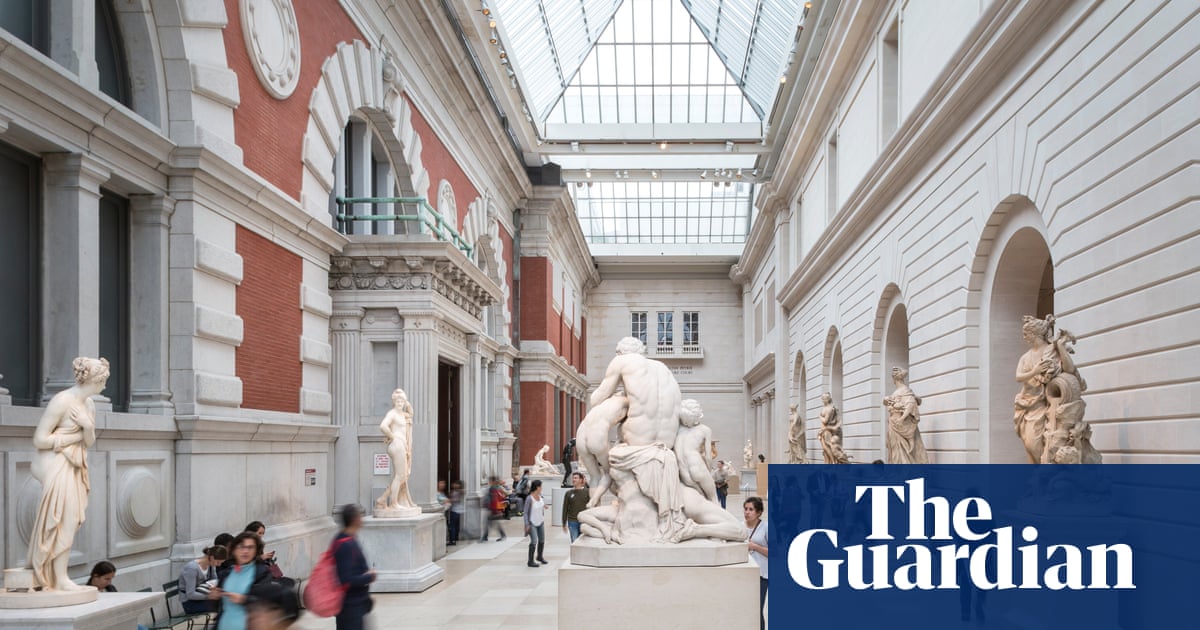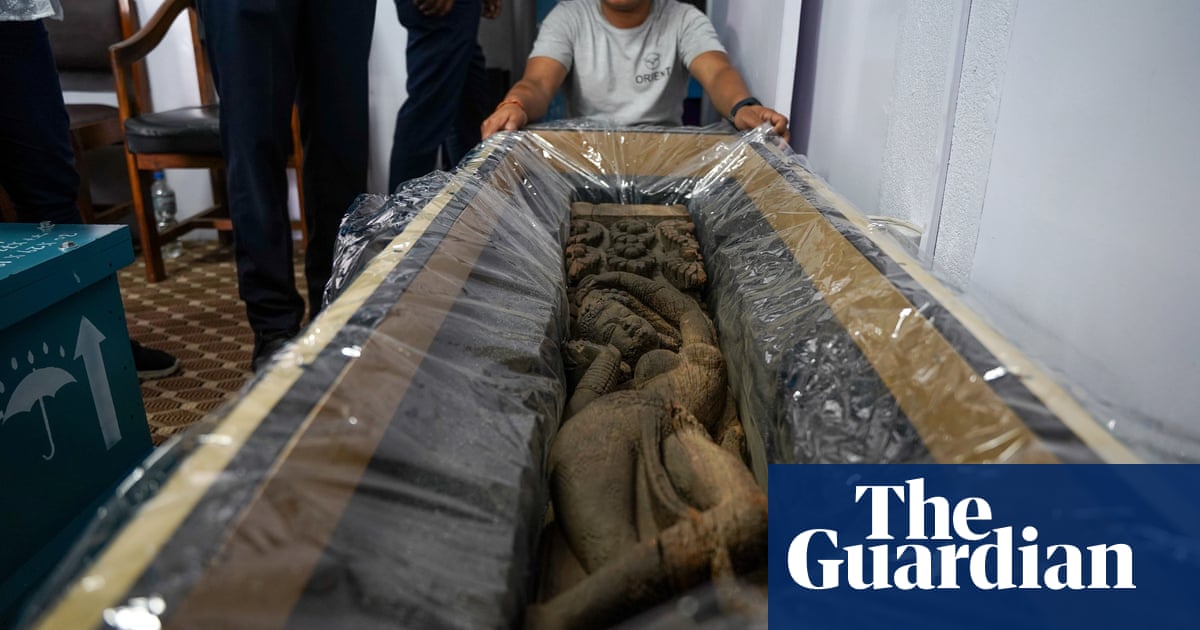
Some museums have more personality than others and the American Museum of Natural History has never had trouble attracting attention. Packed with rare specimens, organic samples and glittering minerals, as well as some uncannily lifelike animal and human models, the New York institution has long featured in urban legend, as well as on the big screen.
So this week – despite the fact that the Metropolitan Museum, its larger, arty sister directly across Central Park, is to hold its glitzy annual gala on Monday – the AMNH will still be competing for headlines. After nine years of planning, a pandemic and $465m (£370m) spent, the museum opens an audacious new building on Thursday – the Richard Gilder Center for Science, Education and Innovation.
So far, those who have seen it are largely in favour of its unique design. The New York Times architecture critic has likened its interior to “a canyon”, predicting it will become “a colossal attraction”. However, others have queried the value of such a costly, odd newcomer.
For more than a century and a half the AMNH has graced the affluent Upper West Side of Manhattan, a repository of fond memories as well as world curios. It remains most famous for its astonishing, detailed dioramas, the displays that evoke natural environments and animal habitats. In the collective imagination of the city, the place looms as large as the beloved blue whale that still hangs from a gallery ceiling. Not only was the museum the scene of a notorious gems heist back in 1964, when two beach bums slid inside with a glass cutter and left with the Star of India, it has also enjoyed a cinematic profile. This is where Ben Stiller’s security guard character tackles the inhabitants of the dioramas, including Owen Wilson’s cowboy and Steve Coogan’s Roman legionnaire, when they spring magically to life in the first Night at the Museum film.
The Richard Gilder Center, named after an illustrious benefactor who died three years ago, is a giant cave that will join up all the galleries. It takes its visual cue from the rocky mounds in the park landscaping nearby – those outcrops that remind walkers of the real geology underneath all the steel skyscrapers and the plutocrat grandeur of old New York. In total contrast to all the stick-thin “pencil” towers that have recently been embedded along Manhattan, the atrium at the heart of the new 21,000 sq metres building looks as if a team of pranksters sprayed porridge all over the Guggenheim museum’s clean white spiral.
The stone-like surfaces were in fact made by spurting concrete on to the walls with a hi-tech version of the “splurge guns” from Bugsy Malone. The resulting curves mimic the shape of the neo-Romanesque building it is attached to, continuing what the former president of the museum, Ellen Futter, calls its “undulations”. The desired rough-hewn effect was achieved with rollers pushed by workers with long poles, eventually making the place look like somewhere Fred Flintstone could move into without having to rethink his aesthetic.
The older, neighbouring facade also has some mock-stone textures, dating back to an earlier romance with rudimentary masonry. This means the new building will have a good defence from that nasty “carbuncle” slur, once used about a modern addition to London’s National Gallery by the then Prince of Wales, King Charles III.
The concrete porridge is actually “Shotcrete”, a substance created 110 years ago, rather neatly, by the inventor Carl Akeley, who was also the skilled taxidermist who shot and brought the gorillas back from Africa that adorn one of the museum’s most dramatic dioramas. The application of his Shotcrete has made irregular holes and vantage points that peer down on the huge lobby.
The architect who has given New York its controversial new cave is based in Chicago. Jeanne Gang introduced herself to journalists last week as “your dead end gal”, although she is actually one of the top names in the field. Her “dead end” reference was to her team’s design battle with the AMNH’s many frustrating cul de sacs and corridors-to-nowhere.
Although the project is over-budget and late, down partly to the pandemic, a planning dispute and soaring building costs, Gang’s key achievement is to have conquered most of these dead ends, linking the museum’s many buildings at 33 points.
For Futter, who oversaw the construction before she retired in March, the new links will allow the museum to function better, as well as aid the public. “We all now work across different disciplines and different species, and for our visitors the new connections are not only a convenience, but really enhance the meaning of what people are seeing. We probably had a survey done about the bad impact of all the old dead ends, but we could see the problem with our own eyes.”
Gang’s design has also created an impressive home for the 4 million items that have been moved in, as well as the extraordinary dry butterfly collection where novelist Vladimir Nabokov once volunteered. The architect’s mission was to create a “landscape of discovery”, she said last week, and to do it using natural light and air. The result also has a splendour that easily matches the older buildings. It was important to Gang, however, not to dwarf the real stars of the show: the centre’s live collection of butterflies and insects. A large, heated vivarium will now let the public walk through a parade of colourful butterflies, while downstairs a series of glass tanks and globes will allow them to watch the complicated regimen of thousands of leaf-cutters as they go about their mysterious tasks, carrying foliage and feeding fungus.
There is also a fresh emphasis on asking questions and not dictating to the public. So there are open cabinets of stored samples and fewer closed doors. This reflects Futter’s determination to “put science back into people’s methods of understanding of the world”.
“The stories about the collection are not just about each of the objects in isolation, but about what we are learning now, opening it all up for visitors to see,” she said. “We felt that helping people to understand science and to trust science was very important now. We want to put it before them so they can understand the scientific process and the evidence.”
Admitting that the hardest challenge of her long tenure was posed by the pandemic, Futter added that opening up, or “de-bricking”, the museum was almost as tough. Last week her successor as president, Sean Decatur, picked up on the urgent theme of increasing public trust in science. He argued that widespread panic about issues such as climate change and biodiversity are not necessarily helpful in an emergency. The cure, he argued, is scientific openness and clarity.
The museum also needs its quotient of shock and awe if it is to continue to draw in the visitors, so there is a stylish, state-of-the-art interactive experience in the new wing that visually explains the chain of connection between genetics and varied habitats on the planet.
All the same, Futter and her former staff at AMNH seem to agree that it is the likes of the leaf-cutters and their strange antics that will remain centre stage. “Nothing trumps reality,” she said. “In the new building we are allowing our live displays and our sample collections to stand on their own for what they are.”
The text and main photo caption of this article were amended on 30 April 2023. An earlier version said that Jeanne Gang was Canadian; she is American, and was born and raised in Belvidere, Illinois.












